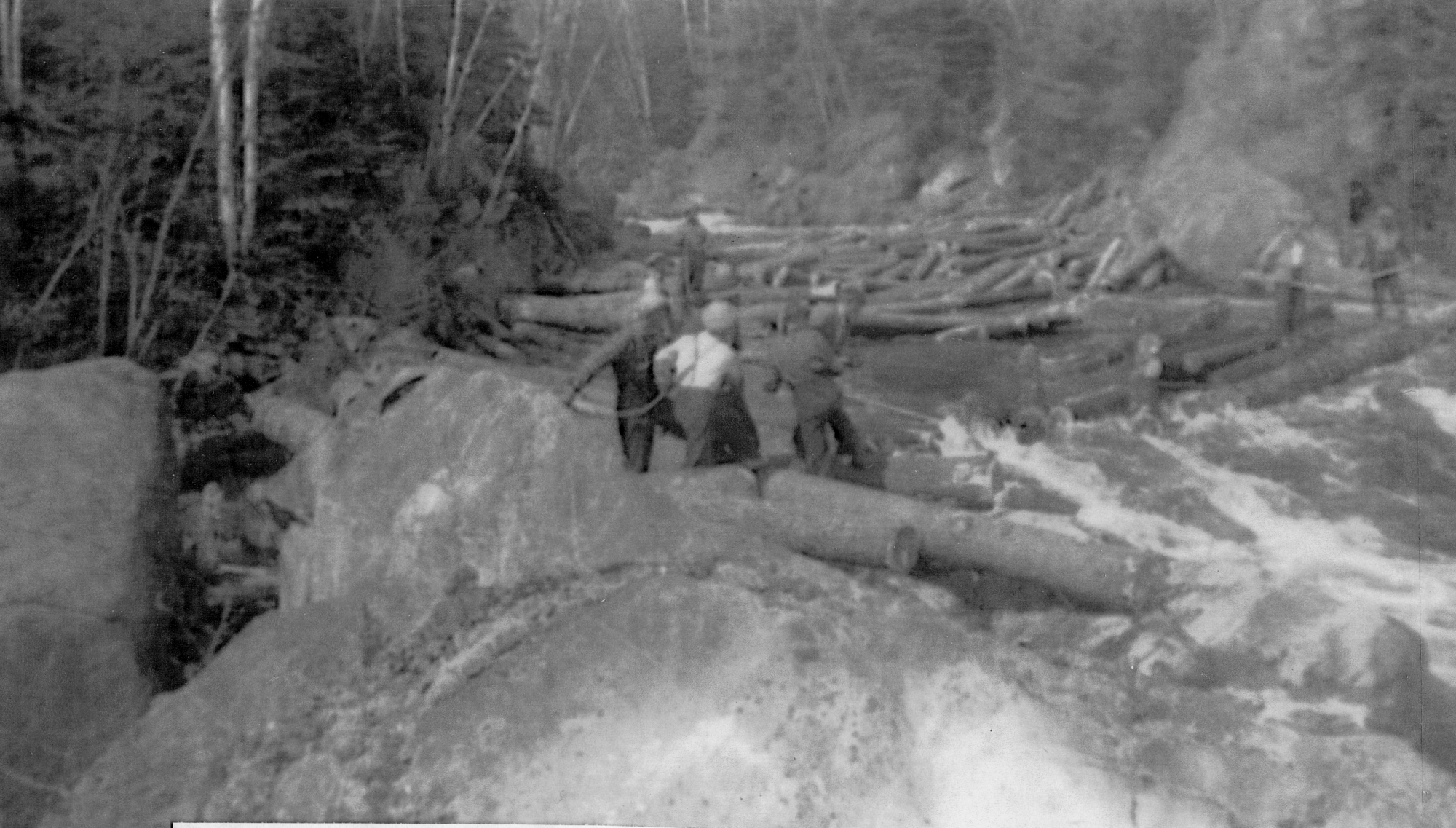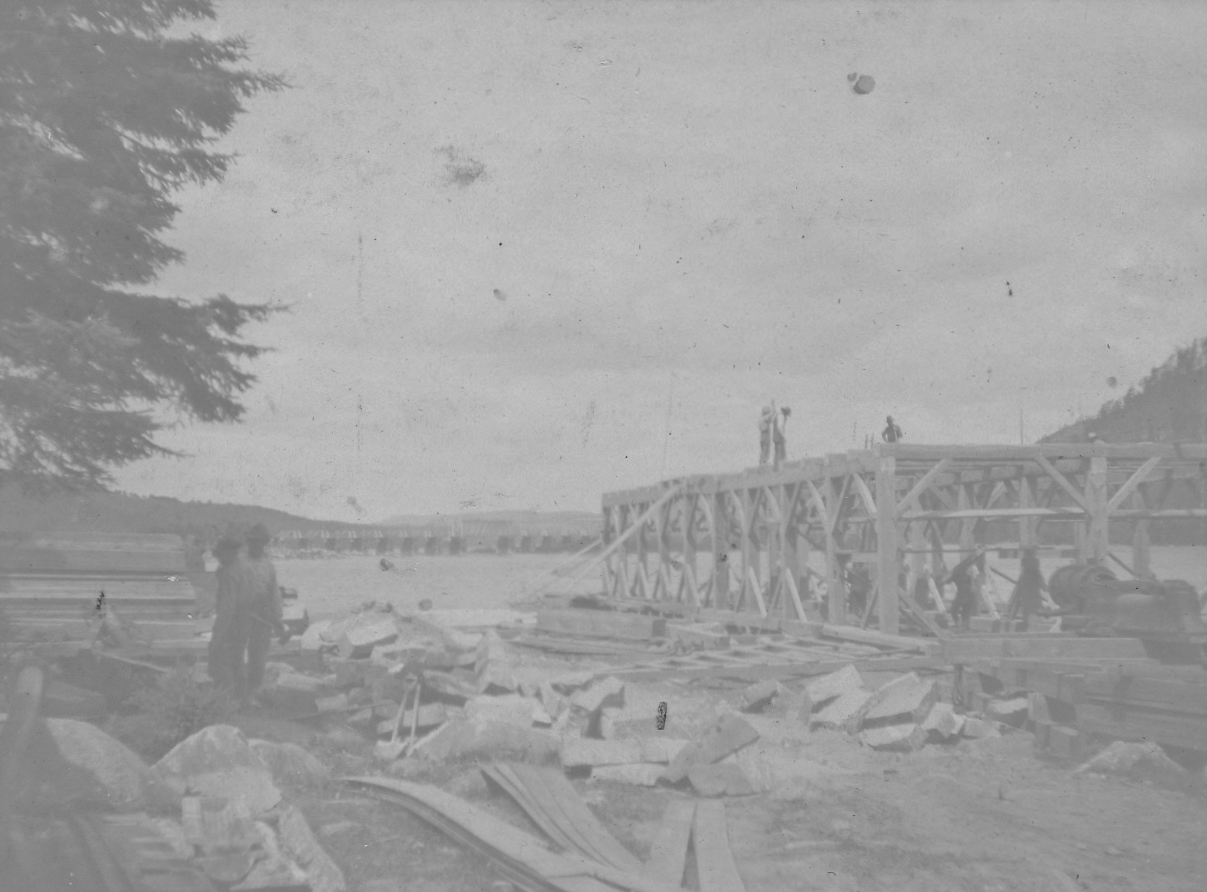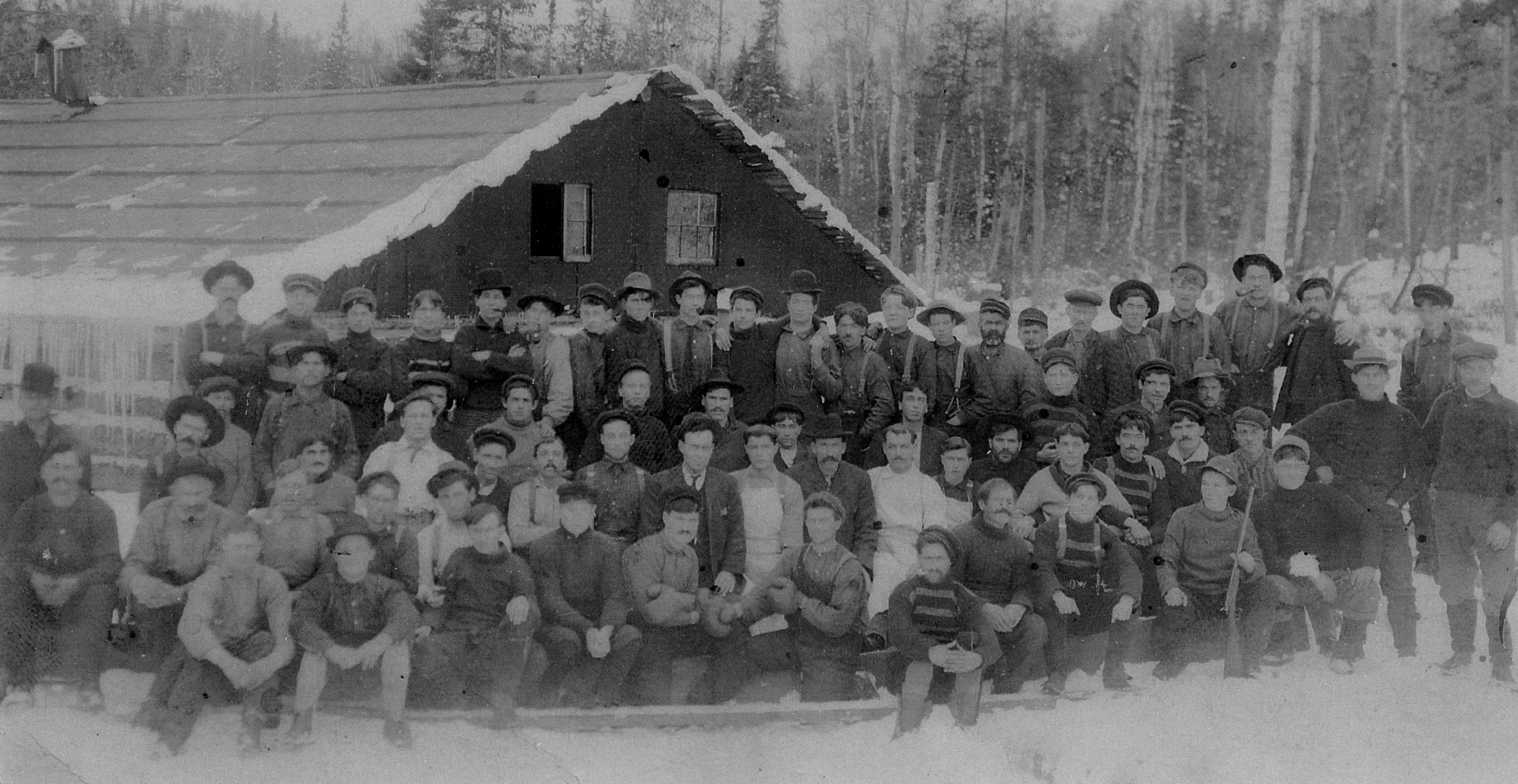- Virtual tour/
- Community/
- Geological/
- Heritage River/
- Transportation/
- Natives/
- Anahareo/
- Making Bannock/
- Fur trade/
- Lumbering/
- Lumbering Continued/
- John Argo/
- Deux-Rivieres/
- Cameron/
- Papineau/
- Calvin/
- Kiosk/
- Mattawan/
- Firmin/
- Local Characters/
- Local Character I/
- Military/
- Ecotourism/
- Closing
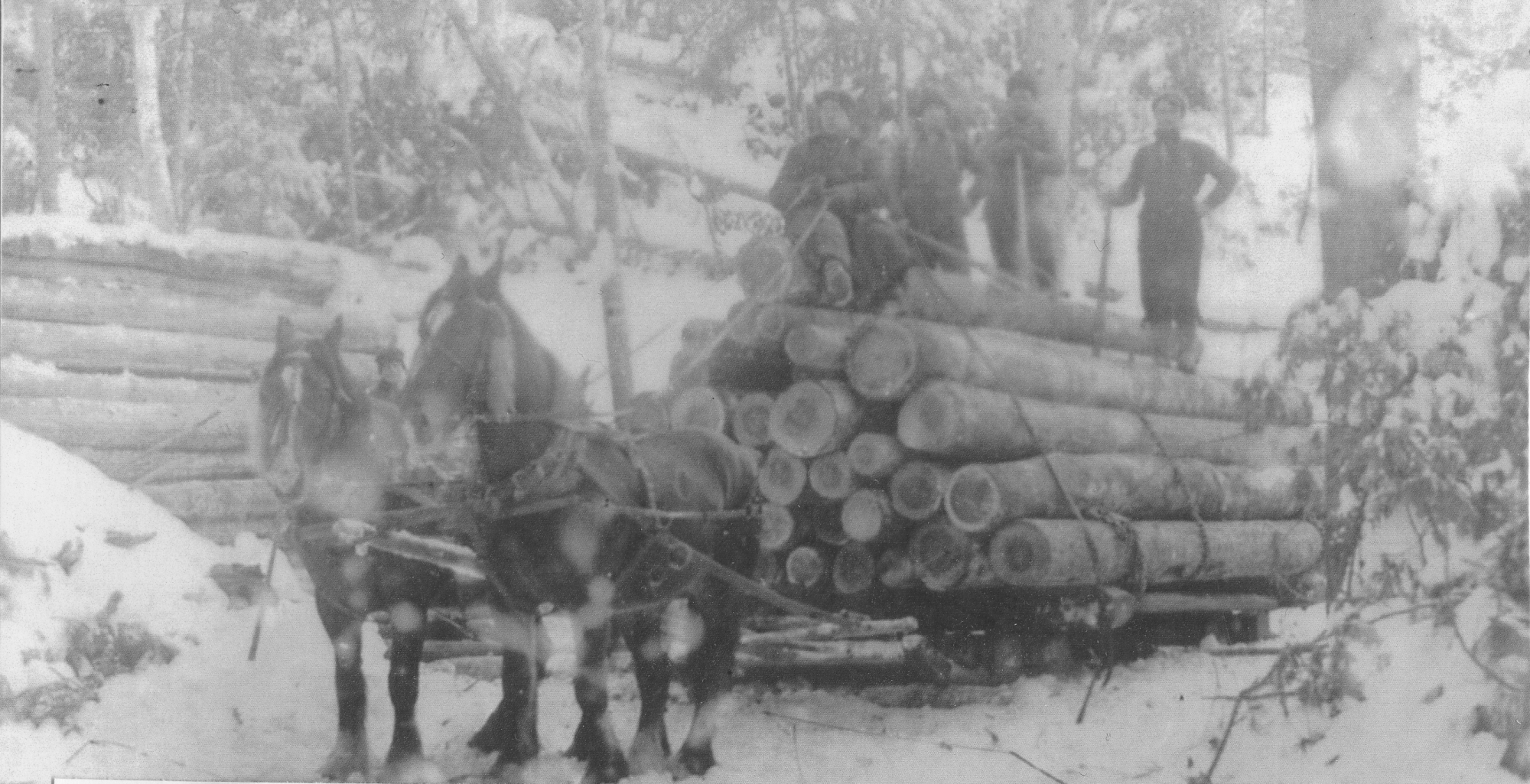
A team of horses is pulling out a load of logs during the winter season.
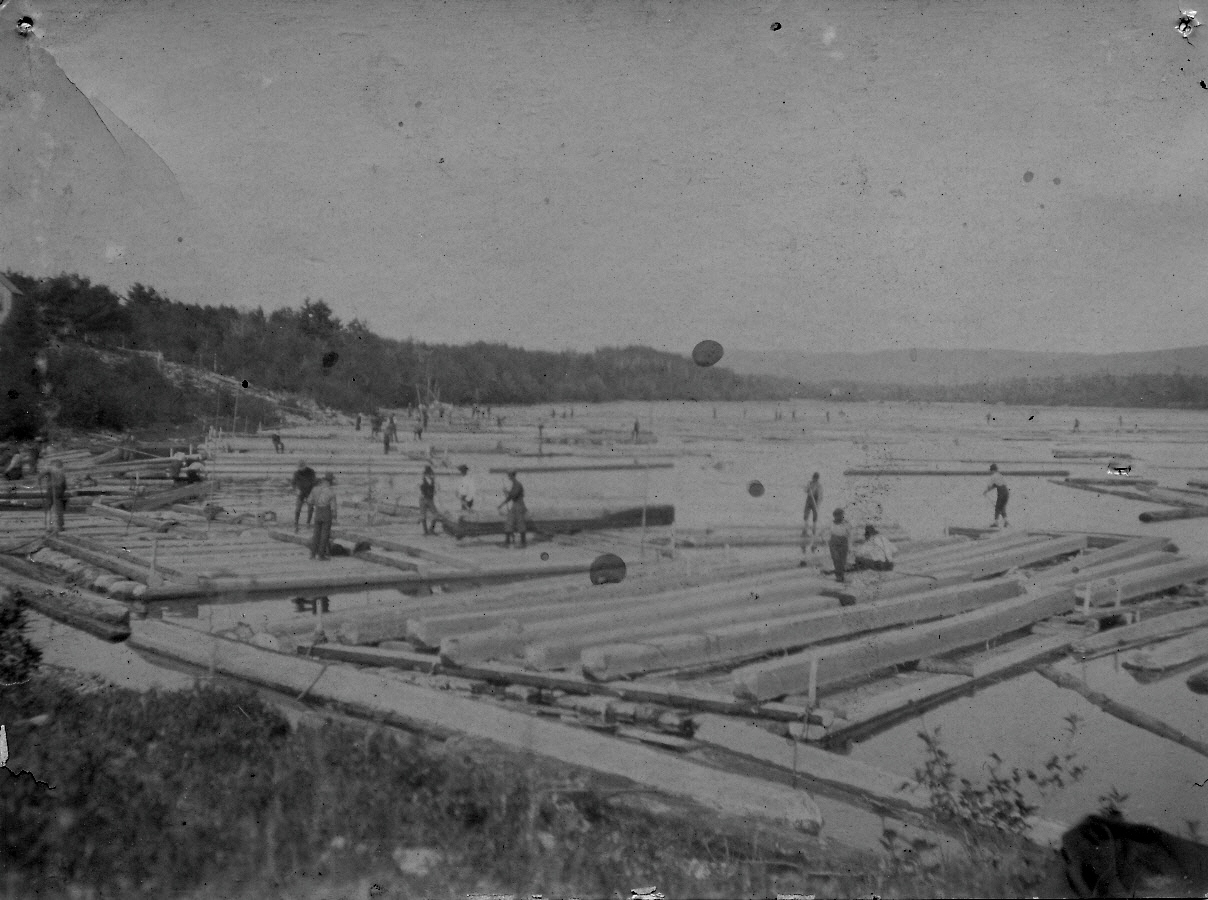
The men are tying a group of logs together to make a raft to float on the log drive down the Mattawa River.
